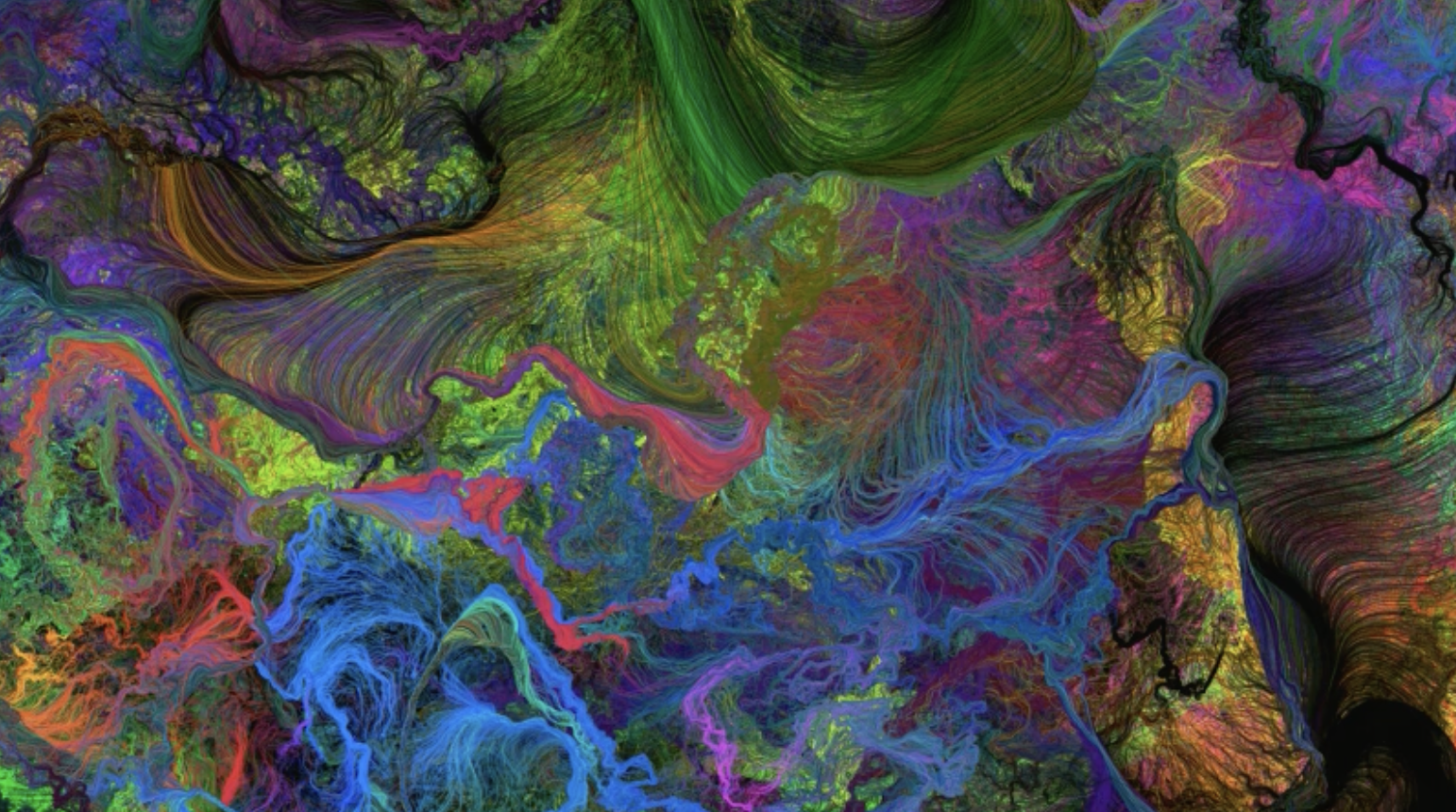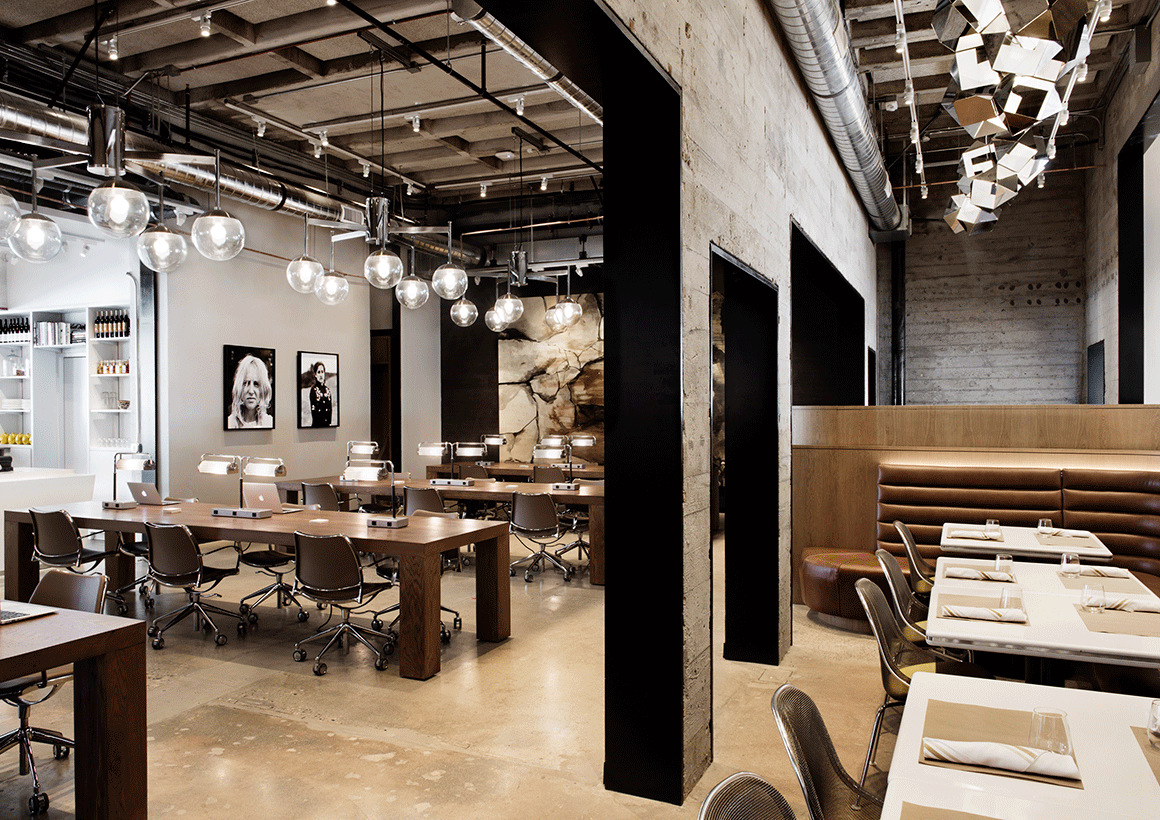Roxanne Vardi
Andreas Nicolas Fischer is a multidisciplinary artist from Berlin. Fischer started his artistic career as a traditional artist working mainly with painting and drawing, but became interested in generative art upon his visit to artist Casey Reas’ Process/Drawing exhibition in 2005 at DAM Gallery in Berlin.
At the time he discovered Reas’ work, Fischer was interning at ART+COM, founded by Joachim Sauter, who also later became a professor at the Berlin University of the Arts. Fischer learnt Processing from the very first people who worked on the creative coding environment conceived and developed by Casey Reas and Ben Fry in 2001. While he did not have a background in computing, Fischer was motivated to teach himself code and started creating animations with Processing. He also worked briefly with fabrication and sculpture to adapt to the demands of the market at a time when the interest in digital art was not yet mainstream. However, he considers himself a purist and likes to create systems that operate autonomously, something that he can achieve by working with generative algorithms.
In the following interview, that took place on the occasion of the artist’s solo artcast The Art of Hypnosis on Niio, Andreas Nicolas Fischer unfolds the motivations and techniques behind his work.
How would you describe your art practice today?
My practice is mostly generative pure abstraction. I do some narrative 3D animation philosophizing about the end of the world, but my main focus is generative systems and aesthetics and abstractions; developing these systems over time and translating them into different means. My personal preference is to create art that is self-contained, and doesn’t take data from the outside. I used to work as an art director to make a living, making 3D animation as this was a bigger market, but I didn’t want to be part of that career where artists need to receive grants. I always wanted to have a hard skill, with a foot in the industry, but I like my work to be more dynamic where I learn something and then apply it. This is what I did for ten years, but then I started to receive commissions, until at some point my art practice and commercial practice merged. Today I don’t work for agencies and I don’t work as a freelance artist. I do my own work. My main focus is generative systems and aesthetics and abstractions, developing these systems over time and translating them into different means.
My main focus is generative systems and aesthetics and abstractions, developing these systems over time and translating them into different means
Andreas Nicolas Fischer, Nethervoid 07 L 2180, 2022
You have described some of your latest works as ‘Ambient Art’. Could you please elaborate on this concept?
I have been doing more real-time work in the past few years, I like to call it ambient art, it’s not narrative and it’s not super intrusive. You don’t need to pay attention to the work all day, but it’s a small intricate development with its own pace. I really like when you get drawn into the work. In this way I like to see my work as hypnosis, I hypnotize people through the work in a sense. I do this for myself, because I like the process of viewing my own work, but I have also observed that in my audience, some people tell me that they get lost in the work. And that’s what I like, changing people’s state, changing their psychological state. We all have a perceptual system, but you can influence that. I like changing someone’s state of mind with my art overtime. It’s an introspective process, there are no demands, it’s more subtle. In a sense I am not saying anything. I make my work for myself but also for other people.
Many of your latest series such as Nethervoid and Infinite Void also contain a sound element that feels crucial to the works. Is this another way for you to influence your audience’s perceptual system?
There are sound frequencies that you can use to influence one’s perceptual state, which I started looking into. I create some of the sounds with other artists, while others I find and modify myself using generative code. Composers hear so much more than we do, that’s the beauty, to be able to collaborate with sound designers because it enriches the artwork and we learn from each other.
On one of my works, I worked with a friend of mine, David Kamp, a composer and sound designer. I had sent him a rough cut for this work and I literally almost cried when I got it back from him. There are not many things that move me, but when I got that [sound design] back it was very powerful, it was so subtle. It was like listening to 70’s progressive rock on a good sound system, there is just so much there.
Andreas Nicolas Fischer, Feeder-01-2160p, 2022
I like changing someone’s state of mind with my art overtime. It’s an introspective process, there are no demands, it’s more subtle.
Can you tell us more about your involvement with creating video sound installations which make the work immersive and create a dialogue with an environment such as The Origin of Quantum Dot, established in collaboration with Samsung?
That was a unique and special project. I co art directed it and created the content for those screens, but the sculpture was made by Christopher M. Bauder and Schnelle Bunte Bilder, a studio of visual art in Berlin. But this is not something that you can do every day.
In 2021 we were commissioned to create an installation in Washington DC. It was such a powerful experience as the end result resembled an animated James Turrell, playing with light, where the sensation of the room completely changed according to the light.
What is it that draws you into creating digital art or software-born art created with code?
What I like a lot about the process is creating something from nothing, just from text and code. Of course the whole programming environment and the libraries were created by someone so it’s not nothing-nothing, but what I like is that you have something that is a pure instruction and you can create something new from it that has so much depth and richness . This is so powerful. I love 3D animation and coloring and shading, but 3D animation is an insane amount of work. What I like about software is the leverage that you have, making systems autonomously while you are running the code, it’s also a flexible medium. With AI and generative systems you have a lot of leverage and you can control these machines to do something, I appreciate that on a conceptual level.
You start with pure instruction and you can create something new from it that has so much depth and richness. This is so powerful!
When you use found data in your generative artworks, how important is it for you that people know the origin of the source material?
It depends, in the past I would use found images to create some of my works, but now I generate my own procedural compositions. I like both but I am not interested in where it came from, and visually it’s far enough removed from the original image that I don’t feel guilty about it. The machines give you power to create some things that you cannot create by hand.
Andreas Nicolas Fischer, Infinite Void 13A L 2098, 2022
You have also experimented with AI. What is your take on working with generative adversarial networks?
I had a brief and romantic relationship with AI. People talk about the end times of machines and the domination of AI. There are reasons to be concerned about that. I received a few DALL·E invites which I intentionally gave out to people who are not versed visually, but what I found is that if you don’t have good taste or that trained eye, what you produce with the AI is not going to be that interesting. This is what I concluded from my sample experiment. These tools on the one hand are very helpful for certain things, but also very biased because as soon as you get specific about things, what it hasn’t seen, then it gets harder. In the beginning when I got it I was completely sucked in, I sat there for a couple of days and hit the ‘dopamine button’.
As an artist everything you do is a dopamine loop, that warm fuzzy feeling is something I am trying to reproduce. But the thing is once you have an image prompting machine to create things that are visually pleasing, things one can do without a huge effort, your receptors shut down, and the satisfaction is that you don’t feel good or accomplished with yourself. It’s like TikTok, after half an hour of scrolling if I would ask you what you remember about it, it wouldn’t be very much. I see AI going where you can turn yourself and other people into dopamine junkies, it’s visual stimulation on steroids. The thing with all of technology is that it’s only going to get stronger, sowe need to find a way to deal with it.’. Today I mostly use AI tools to up-res all of my older videos by adding more detail to them. To me, this is the beauty about it, to increase the fidelity of the content.
I see AI going where you can turn yourself and other people into dopamine junkies, it’s visual stimulation on steroids.
Can you dive deeper into your use of the term ‘void’ in describing or naming your works?
Using the term void is intentional, coming back to wanting to hypnotize or affect people’s mental state through the works. The void is more of a meditative void, a mental void. Of course it’s visually very full, but for me meditation is hard, I don’t have a solid practice but sometimes my work can help me with it by producing that mental void.








